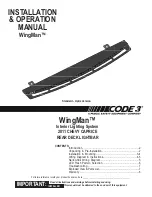
Only a rear-facing child seat provides
proper support for a baby’s head,
neck, and back.
An infant must be properly
restrained in a rear-facing, reclining
child seat until the child reaches the
seat maker’s weight or height limit
for the seat, and the child is at least
one year old.
Two types of seats may be used: a
seat designed exclusively for infants,
or convertible seat used in the rear-
facing, reclining mode.
If placed
facing forward, an infant could be
very seriously injured during a
frontal collision.
When properly installed, a rear-
facing child seat may prevent the
driver or a front passenger from
moving the seat as far back as
recommended, or from locking the
seat-back in the desired position.
A rear-facing child seat should
always be installed in a back seat, not
in the front. Even with advanced
airbags, which can automatically
turn the passenger’s front airbag off
(see page
), a back seat is the
safest place for an infant.
In either of these situations, we
strongly recommend that you install
the child seat in a different back
seating position or get a smaller rear-
facing child seat.
30
Driver and Passenger Saf ety
Protecting Infants and Small Children
Protecting Inf ants
Child Seat Type
Do not put a rear-f acing child seat in
a f orward-f acing position.
Child Seat Placement
38
Placing a rear-facing child seat
in the front seat can result in
serious injury or death during a
collision.
Always place a rear-facing child
seat in the back seat, not the
front.
03/08/19 22:31:47 31S3V630 0043
















































